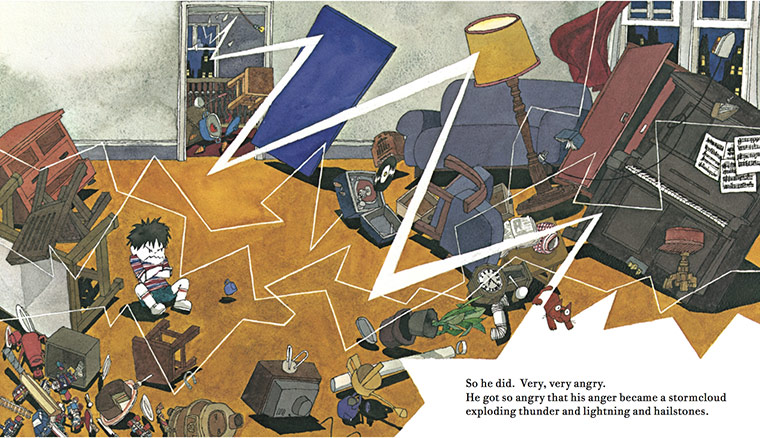
Kitamura made his debut as an illustrator with Angry Arthur, about a small boy who throws a tantrum after his parents tell him to switch off the TV. Such is the force of Arthur's rage that soon the house is in ruins. Kitamura's mischievously detailed illustrations, with Arthur's mouth set in a jagged grimace, brilliantly interpret the powerful economy of Oram's text Photograph: Andersen Press
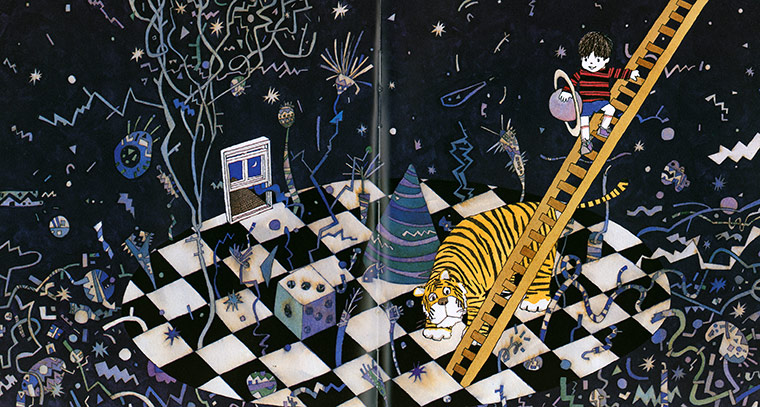
In this second collaboration with Oram, Kitamura again gets inside a child's mind but in a gentler way than in Angry Arthur. Inspired by the ladder on a toy fire engine, a small boy climbs out of everyday life and into the realms of fantasy Photograph: Andersen Press
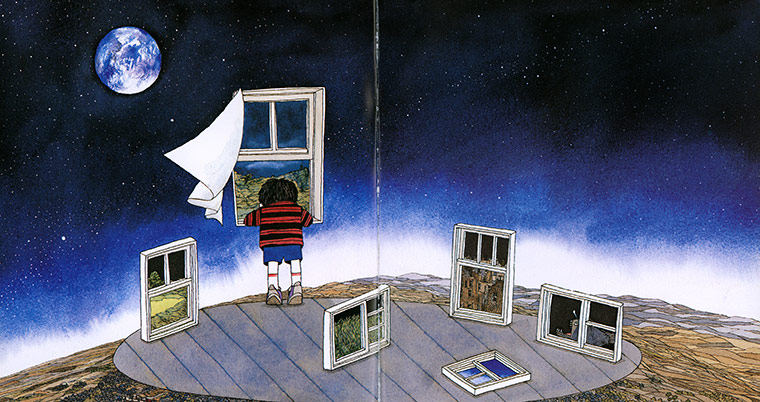
Kitamura is a fine colourist. This magical, surreal spread shows the child opening windows on to the world of his imagination
Photograph: Andersen Press
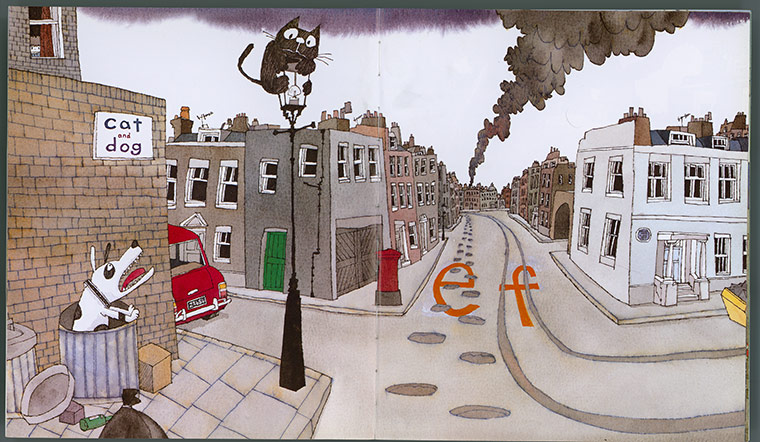
In his beautifully constructed compositions, even the wildest slapstick activity fails to upset the serenity of the overall order. It's in the composition, Kitamura thinks, that he's at his most Japanese – as in this alphabet illustration, in which cat and dog embody the letters C and D, while the letters E and F anticipate the next spread
Photograph: Andersen Press
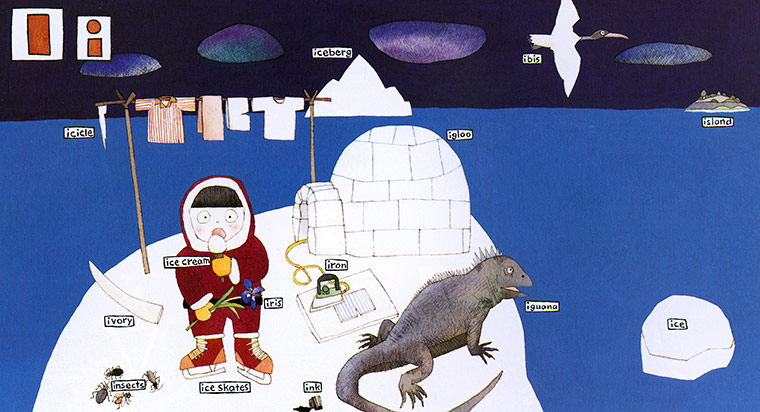
An early inspiration for Kitamura was a primary school teacher who, in place of more conventional lessons, talked for hours on end about interesting things he'd heard about or read. There's nothing patronising in the words he chooses in this second alphabet book Photograph: Andersen Press
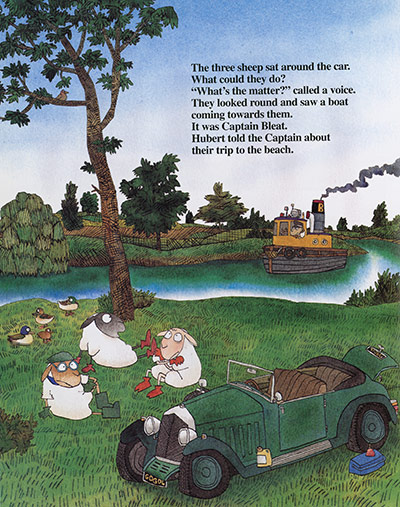
This is one of Kitamura's finest books, where the full range of his skills are on display – crazy plot, thoughtful characters, luscious landscapes and urban scenes bristling with architectural detail. The characters (mostly sheep) are drawn in a simple, cartoon style but the eloquence of their body language makes it seem quite natural for a them to wriggle out of their fleeces to go for a swim Photograph: Random House
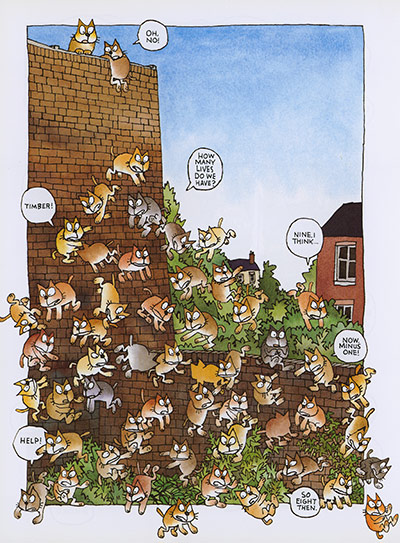
Kitamura had no formal art training but he drew constantly from an early age and devoured comics – both Japanese and western. Their influence can be seen in the engaging comic strip style of this second Boots book, in which a cat makes mischief in a collection of humorously philosophical tales Photograph: Andersen Press
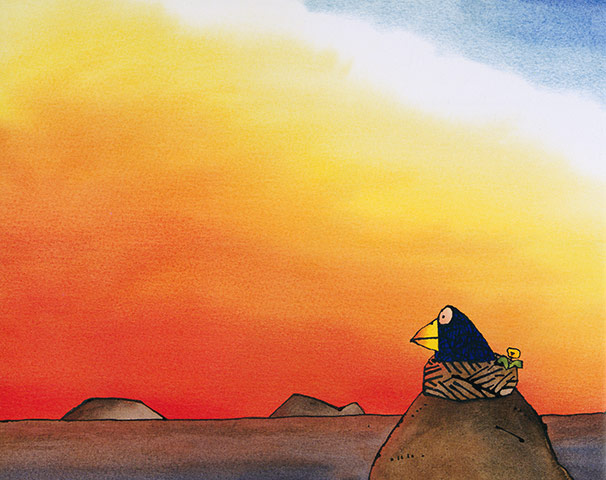
Kitamura draws with a Japanese glass pen, with tiny grooves to accommodate the ink. This creates a distinctive line that blobs now and then as it glides, giving an unmistakable character to every line. After he is sacked from the dawn chorus because he can't sing in tune, Igor goes off into the desert and builds a nest on a big rock, where he thinks nobody will hear him Photograph: Andersen Press
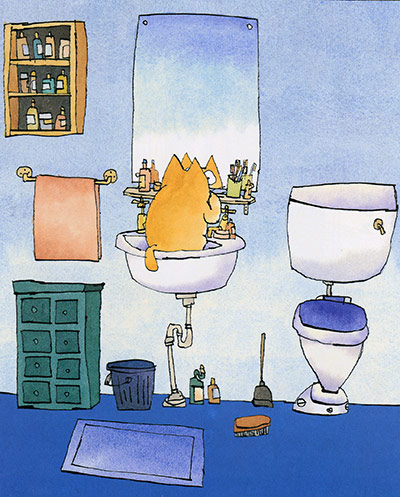
A small boy is so reluctant to go to school that he swaps places with his pet cat. After being bullied by local moggies and chased by the neighbour's dog, he realises that life as a cat is not such an easy option after all Photograph: Andersen Press
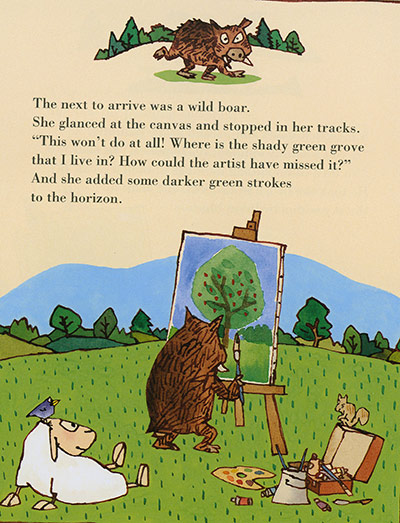
Kitamura is good at dramatising the difficulty of art. Pablo painter gets so stuck with his painting that there's nothing for it but to take a nap. In his dreams, various animals add their own touches – here, Wild Boar adds a grove of trees while Sheep, who has already given the grass a greener hue, looks on Photograph: Andersen Press
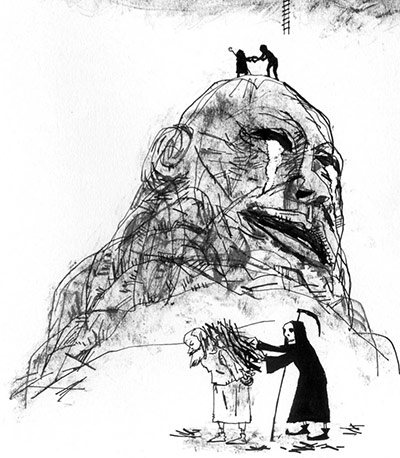
This retelling of Dante's Inferno for a young audience by the poet John Agard marked a new departure for Kitamura, whose black and white drawings take on a new freedom and ferocity as he follows Agard's hoodie-wearing teen narrator down the gutter of the book and into the nine circles of hell Photograph: Frances Lincoln publishers







